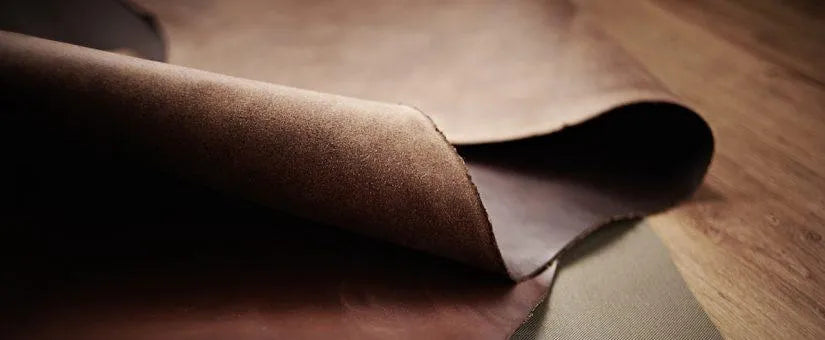
VEGETABLY TANNED LEATHER - WHAT IS IT ALL?
While browsing our homepage, you have certainly come across the term "vegetable tanned" a time or two and may have asked yourself: "Vegetable? What does that even mean?"
Leather is one of the oldest natural materials
Leather has been used for centuries as a raw material for a wide variety of products. Due to the rapid perishability of raw animal hides, humans began early on to develop a suitable method for stabilizing and preserving animal hides. This process is called tanning, and we know the preserved animal hides as leather.
But not all tanning is the same. Today, there are a variety of different processes used to tan leather. The type of tanning process has a decisive influence on the quality of the subsequent product. The vegetable tanning process, also known as tanning or red tanning, is a purely vegetable and natural method of tanning leather. Instead of mineral salts and other chemical additives, as often used in the leather industry, the tanning agent in vegetable tanning is produced purely from vegetable "ingredients".
You will also find the right camera bag for your equipment and everything you need to protect your camera in our Oberwerth Shop.. From classic camera bags modern sling bags up to noble photo-beachers and backpacks and backpacks. Of course you will also find hand straps and shoulder straps. Finest craftsmanship from the best materials. Feel free to look around and find the bags & accessories that best suit you and your equipment!
In this process, the animal skins are tanned with the help of plant parts such as tare pods, oak and spruce bark, olive leaves or rhubarb roots. The tannins contained in the plants ultimately form the tanning agent. During the actual tanning process, the tannin obtained from the respective plants and woods is placed together with the hides in a pit filled with water. Over time, the hides are repeatedly placed in further baths with a higher tanning consistency. The hides tanned by this process are then placed in depots filled with tanning agents. These must be changed regularly. Changing the depots is extremely important, as otherwise the use of one and the same depot can lead to the onset of putrefaction processes and the hides would become completely unusable.
As this very abbreviated description shows, the process of genuine, purely vegetable tanning is very time-consuming and can easily take several months. Because of the high time required and the associated costs, only about 10-15% of the world's leather production is vegetable tanned today.
Why do we use vegetable tanned leather?
Besides environmental and sustainability considerations, haptic aspects as well as peculiarities of the leather play a major role in the selection of our leather. Therefore, we have deliberately chosen vegetable-tanned leather for the bags of our CLASSIC LINE. Due to the gentle vegetable tanning, the pores of the leather are not closed, for example. You could say the leather is still alive and lets our bag mature with its owners. The natural look of vegetable tanned leather and the special, unique grain of each hide, makes each of our bags unique. Vegetable tanned leather becomes softer and more beautiful with use and acquires a special "patina" over time. Also, the leather forgives small carelessness, because scratches and traces of use can be easily polished out with a suitable leather care.
We recommend our Care & Protect leather care spray, which is 90% based on natural ingredients such as olive oil.

(signs of use/light patina)
after
(after treatment with Oberwerth Care & Protect)
Sign up now for our newsletter and receive regular updates on our blogs, products and offers! You will also receive a 10% voucher for the Oberwerth Online Shop after successful registration!

